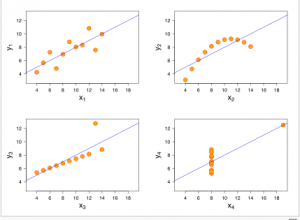Point: Unlike the diminishing returns of the Experience Curve, Collaboration Curves offer continuous, exponential improvement and innovation through knowledge sharing and interactions among a group of participants.
Story: Most of us have heard about the Experience Curve, which traces how a company’s rising experience in making a product leads to declining cost of that making a product. On average, the cost declines 20-30 percent each time that a company’s experience in making that product doubles. The Experience Curve, which has been systematically studied since the 1960s, holds true across a wide range of industries. The sad flip-side of the Experience Curve, however, is that the rate of improvement declines over time because it takes longer and longer for experience to double. It has diminishing returns. Can anything be done to sustain the rate of improvement? Is there another way to keep on advancing? There is: Collaboration Curves.
Collaboration — in the form of knowledge sharing and interactions among a group of participants — improves the performance of all. Before the internet, collaboration took place primarily face to face, along with some letter-writing between participants. For example, in the 1870s, the art movement that came to be called Impressionism arose. A group of young painters — Claude Monet, Pierre Renoir, Camille Pissaro and others — started meeting in cafes, talking and visiting each other’s art studios. They became a collaborative group; that is, they’d share their work in progress, talk about painting techniques, experiment with colors, and help each other learn and improve.
For example, the group broke with the tradition of black shadows. They experimented with shadows painted in purple, deep blue or a mix of other colors. Sometimes the shadows weren’t even that dark. This was a radi cal idea — no one had painted shadows in a different color before, but once one of the group came upon it, others adopted it as well. They also expanded the notions of what could be painted. The subject matter needn’t be a religious icon, mythological scene, portrait of a nobleman or an allegorical landscape — it could be something as simple as a haystack or water lilies, painted over and over at different times or day or different seasons, showing how the light and color changes with the times and seasons. Combining their experiences accelerated the Impressionists’ innovations in color, composition, brushwork, and subject matter.
cal idea — no one had painted shadows in a different color before, but once one of the group came upon it, others adopted it as well. They also expanded the notions of what could be painted. The subject matter needn’t be a religious icon, mythological scene, portrait of a nobleman or an allegorical landscape — it could be something as simple as a haystack or water lilies, painted over and over at different times or day or different seasons, showing how the light and color changes with the times and seasons. Combining their experiences accelerated the Impressionists’ innovations in color, composition, brushwork, and subject matter.
Today, these collaborative groups can extend online, enabling people to talk and share with others anywhere, any time, thereby greatly — indeed exponentially — improving the group’s capacity to produce. In the old model, the experience of any  one person (or company) grew linearly with time, which created an Experience Curve with diminishing returns. But a collaborating group can multiply experiences by combining lessons from the successes and failures of all to create a Collaboration Curve that sustains performance improvement. The internet, social media, and collaboration platforms greatly enhance the Collaboration Curve by increasing the number of people who can collaborate, increasing the geographic span of people who can collaborate, and increasing the access to the accumulated experience of the collaborative group.
one person (or company) grew linearly with time, which created an Experience Curve with diminishing returns. But a collaborating group can multiply experiences by combining lessons from the successes and failures of all to create a Collaboration Curve that sustains performance improvement. The internet, social media, and collaboration platforms greatly enhance the Collaboration Curve by increasing the number of people who can collaborate, increasing the geographic span of people who can collaborate, and increasing the access to the accumulated experience of the collaborative group.
Collaboration Curves were first identified by John Hagel, who heads consulting firm Deloitte’s Center for the Edge in Silicon Valley. “We’re seeing the emergence of a new kind of learning curve as we scale connectivity and learning, rather than scaling efficiency,” says Hagel in his Harvard Business Review blog (coauthored with John Seely Brown and Lang Davison). “Collaboration curves hold the potential to mobilize larger and more diverse groups of participants to innovate and create new value.”
So far, examples of internet-enabled Collaboration Curves are more anecdotal rather than rigorous because of their nascency. But Hagel has found that collaborative environments like the popular online game World of Warcraft offer participants a way to continue improving beyond what individuals could accomplish alone. In the business world, similar collaboration curves take place on SAP’s software developer sites, and large open source projects such as the Eclipse Foundation. What’s exciting is that “Collaboration curves may reverse the diminishing returns dynamics of the experience curve and deliver increasing returns to performance instead,” Hagel says. The opportunity for interactions among the many participants lets performance continue improving through the continuing contributions of ideas by other participants.
Action: Hagel found that there are three prerequisites for these online collaboration groups to work and generate the Collaboration Curve effect.
- Attract Participants: First, you need people. That’s pretty obvious, that you need people to make this work. But what’s exciting is that the people don’t all have to be talking or active all the time – it’s perfectly ok to begin by just being an observer who lurks and learns from others. Indeed, in SAP’s software developer network (SAP SDN), most participants do just that — learning by reading the discussion forums before they contribute anything themselves.
- Interact: to get better results, you start interacting with others, in discussions — in person or online — sharing experiences, making suggestions, giving feedback. The more interactions, the faster the performance improvement.
- A supportive, multi-layered environment: Supportive means friendly and online. It also means that the technology supports the interaction through discussion boards, archives, live chats, video. Interaction must be easy not only among peers but among all cross-cutting groups. Digital infrastructure lowers interaction costs, enabling large, diverse groups of people to share information and learn from each other, driving performance improvements for all.













